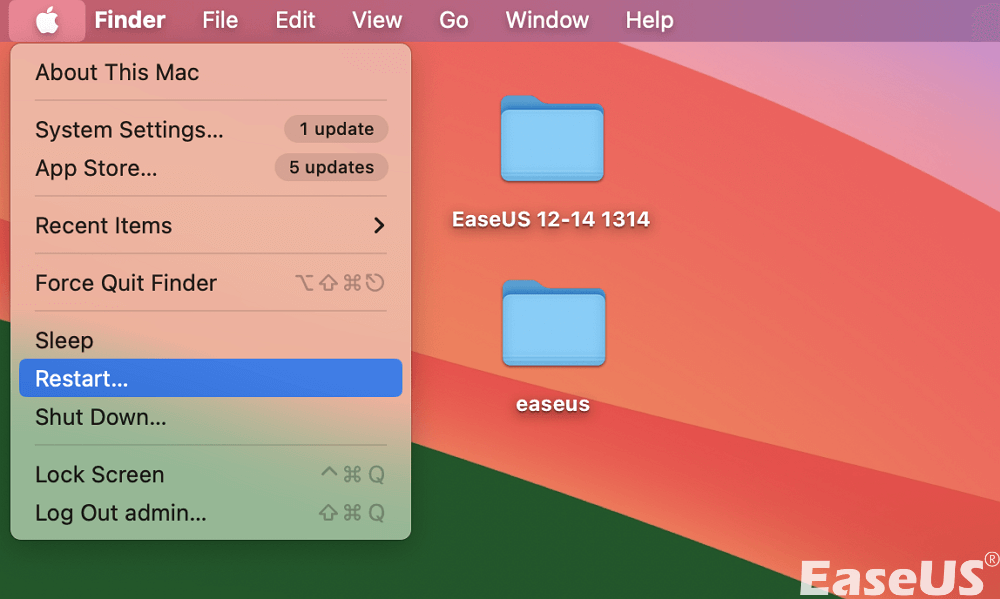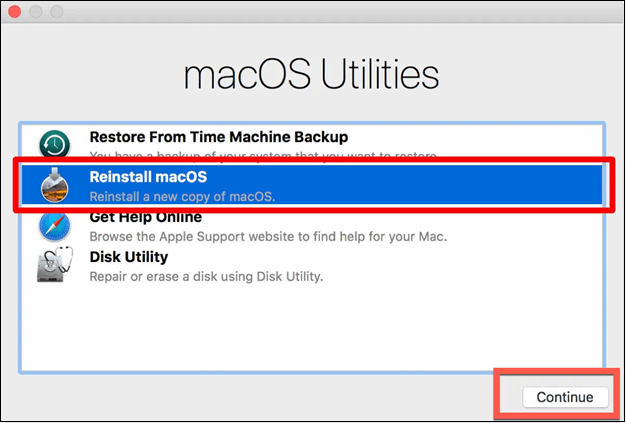We will introduce effective solutions to fix an internal hard drive not mounting on a Mac error, which is also known as a Macintosh HD not-mounted error.
Once the internal hard drive not mounting error occurs, your Mac will get stuck at the boot screen and become unbootable in a short time, in which case, you may suffer fearful data loss. We would like to help you solve the unmounting error caused by "com.apple.DiskManagement.disenter error 0", system crashes, corrupted file system, and more.
Recover Data from the Unmounting Internal Hard Drive Using Software
EaseUS Data Recovery Wizard for Mac helps users recover stored data from an unmounting internal or external disk quickly and safely. When an internal hard drive is not mounted successfully on your Mac, for example, disk0s2 is not mounted, it can scan the stored data on it and display all the recoverable data in a short time.
Follow the steps below to recover data from an unmountable drive:
Step 1. Search for lost files
Select the disk location to search for lost files (it can be an internal HDD/SSD or a removable storage device) on macOS Sierra, High Sierra, Mojave, Catalina, Big Sur, Monterey, Ventura, and the latest Sonoma. Click the "Search for lost files" button.

Step 2. Go through the scanning results
EaseUS Data Recovery Wizard for Mac will immediately scan your selected disk volume and display the scanning results.

Step 3. Select the file(s) and recover
In the scan results, select the file(s) to preview and click the "Recover" button to have them back.

If this post is informative and helpful, share it on social media so that people who have the same problem as you can find a solution.
Solution 1. Restart Your Mac and Check the Internal Hard Drive Again
Restarting the Mac can solve system glitches sometimes and quickly fix the mounting error. Click the Apple icon at the top menu, and click "Restart...". After a few seconds, reboot your Mac and check if the internal hard drive is mounted.

Solution 2. Run First Aid to Repair the Unmounted Internal Hard Drive
macOS has a built-in repair tool called "First Aid" to repair disk errors. Here are the steps to run First Aid on the unmounted internal hard drive:
Step 1. Go to "Finder > Applications > Utilities > Disk Utility".

Step 2. Open Disk Utility, choose the unmounted internal hard drive and click the "First Aid" button at the top menu.

Step 3. Click "Run" and wait for the First Aid process to complete.
If the First Aid process has failed, install EaseUS software to get your data back first, and then consider the third solution - format the unmounting internal hard drive.
Solution 3. Erase the Unmounted Internal Hard Drive and Reinstall macOS
If the file system on the internal hard drive is corrupted, it won't be mounted on macOS. In this case, you should erase the unmounted drive and reinstall macOS.
Note: erasing a disk will delete all data on it, so you should create a backup of your essential data or use the EaseUS data recovery tool to restore the stored data before formatting.
After saving your data, follow the steps:
Step 1. Open Disk Utility and choose the unmounted internal hard drive.
Step 2. Click the "Erase" button at the top menu, set a new name, and choose a new format for the formatted internal hard drive.

Step 3. Boot your Mac in Recovery Mode, and choose "Reinstall macOS" in the macOS Utilities window.

Conclusion
This post introduces 3 effective methods to fix an internal hard drive not mounting on a Mac error. To avoid data loss in the repair process, download EaseUS Data Recovery Wizard for Mac to recover the stored data on the unmounted disk as soon as possible.
Internal Hard Drive Not Mounting on a Mac FAQs
Here are questions people also ask when they search for how to fix an internal hard drive not mounting problem; take a look.
1. How do I force my internal hard drive to mount on a Mac?
Follow the steps below to mount a disk on a Mac:
Step 1. Open Disk Utility, and choose the internal hard drive you want. If it does not appear, click on the "Show All Devices" option.
Step 2. Click on the "Mount" button to force the internal hard drive to mount.
2. Why is my Mac not reading my internal hard drive?
If your internal hard drive is not showing up in Disk Utility and your Mac is not reading it, consider the file system of the internal hard drive is not compatible with macOS, the operating system is crashing, or the internal hard drive is damaged.
Was This Page Helpful?
Brithny is a technology enthusiast, aiming to make readers' tech lives easy and enjoyable. She loves exploring new technologies and writing technical how-to tips. In her spare time, she loves sharing things about her game experience on Facebook or Twitter.
-
EaseUS Data Recovery Wizard is a powerful system recovery software, designed to enable you to recover files you’ve deleted accidentally, potentially lost to malware or an entire hard drive partition.
Read More -
EaseUS Data Recovery Wizard is the best we have seen. It's far from perfect, partly because today's advanced disk technology makes data-recovery more difficult than it was with the simpler technology of the past.
Read More -
EaseUS Data Recovery Wizard Pro has a reputation as one of the best data recovery software programs on the market. It comes with a selection of advanced features, including partition recovery, formatted drive restoration, and corrupted file repair.
Read More
Related Articles
-
Fix Disk Utility Error: Problems Were Found With the Partition Map
![author icon]() Finley/Dec 12, 2025
Finley/Dec 12, 2025 -
8 Ways to Recover Deleted Files on Mac in 2025
![author icon]() Daisy/Dec 12, 2025
Daisy/Dec 12, 2025 -
How to Recover HFS, HFS+ Partition Data on Mac
![author icon]() Daisy/Dec 12, 2025
Daisy/Dec 12, 2025 -
Recover Deleted iPhoto Library and Photos on Mac
![author icon]() Tracy King/Dec 12, 2025
Tracy King/Dec 12, 2025